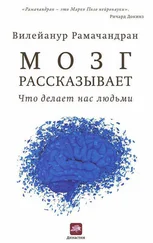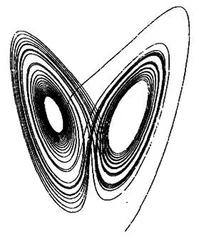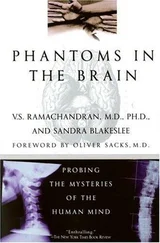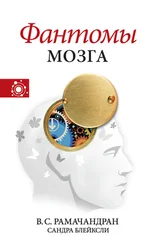Ramachandran V. S., Hubbard E. M. Hearing colors and tasting shapes // Scientific American, 2003, May, p. 52–59.
Ramachandran V. S., Rogers‑Ramachandran D. Denial of disabilities in anosognosia // Nature, 1996, 377, p. 489–490.
Ramachandran V. S., Rogers‑Ramachandran D., Stewart M. Perceptual correlates of massive cortical reorganization // Science, 1992. 258: p. 1159–1160
Sathian K., Greenspan A. I., Wolf S. L. Doing it with mirrors, a case study of a novel approach to rehabilitation // Neurorehabilitation and Neural Repair, 2000, 14, p. 73–76.
Shodinger Erwin. Mind and matter // What is life? New York Cambridge University Press, 1992.
Stevens J., Stoykov M. E. Using motor imagery ш the rehabili tatlon of hemipaiesis // Archives of Physical and Medical Rehabilitation, 2003. 84. p. 1090–1092.
Stoerig P., Cowey A. Wavelength sensitivity in blindsight // Nature, 1989, 342, p. 916–918.
Torey Z. The crucible of consciousness. Oxford; Oxford University Press. 1999
TreismanA. M., Gelade G. A feature‑mtegration theory of attention // Cognitive Psychology, 1980, 12 (1), p. 97—136
Turton A. J., Butler S. R. Referred sensations following stroke // Neurocase, 2001, 7 (5). p. 397–405
Wegner D. The illusion of conscious will, Cambridge, MA: MJT Press, 2002.
Weiskrantz L. Blindsight. Oxford: Oxford University Press, 1986.
Whiten A. Imitation of sequential structure of actions in chimpanzees // Journal of Comparative Psychology, 1998, 112, p. 270–281.
Young A. W., Ellis H. D., Ouayle A. H., De Pauw K. W. Face processing impairments and the Capgras delusion // British Journal of Psychiatry, 1993. 162. p. 695–698.
Zeki S., Marmi L. Three cortical stages of colour processing in the human brain // Brain, 1998, 121 (9), p. 1669–1685.
Baddeley A. D. Working memory. Oxford: Churchill Livingstone, 1986
Barlow H. B. The biological role of consciousness in mmdwaves. Oxford: Basil Blackwell, 1987, p. 361–381.
Baron‑Cohen S. Mindblindness. Cambridge, MA: MIT Press, 1995.
Bickerton D. Language and human behaviour. Seattle; University of Washington Press, 1994.
Blackmore Susan Consciousness: An Introduction. New York: Oxford University Press, 2003.
Blakemore С. Mechanics of mind. Cambridge Cambridge University Press, 1997.
Carter R. Exploring consciousness. Berkeley; University of California Press, 2003
Chalmers D. The conscious mind. New York: Oxford University Press, 1996.
Corbalhs M. C. From hand to mouth: the origins of language. Princeton: Princeton University Press, 2002.
Crick F. The astonishing hypothesis. New York: Scribner, 1993.
Cytowick R. E. Synaesthesia - a union of the senses / 2nd edition (originally published 1989), New York: Springer‑Verlag, 2002.
Damasio A. Descartes' Error New York: G. P. Putnam, 1994.
Dehaene S. The number sense: how the mind creates mathematics. New York: Oxford University Press. 1997.
Dennett D. C. Consciousness explained. New York: Little, Brown, and Co, 1991
Edelman G. M. The remembered present: a biological theory of consciousness New York: Basic Books, 1989.
Ehrlich P. Human natures. Harmondsworth: Penguin Books, 2000.
Gazzaniga M. Nature's mind. New York: Basic Books, 1992.
Glynn I. An anatomy of thought. London. Weidenfeld and Nicolson, 1999
Greenheld S. The human bram: a guided tour London. Weidenfeld and Nicolson, 2000.
Gregory R. L. Eye and brain. London: Weidenfeld and Nicolson, 1966.
Hubei D. Eye, brain and vision. NewYork. W. H. Freeman, 1988.
Humphrey N. A history of the mind. Now York: Simon and Schuster, 1992.
Kandel er Schwartz J., Jessel T. M. Principles of neural science New York; Elsevier, 1991.
Kiimbourne M. Hemispheric specialization // American Psychologist, 1982, 37. p. 222–231.
Müner D., Goodale M. The visual brain in action. New York. Oxford University Press. 1995.
Mithcn Steven. The Prehistory oi the Mind. London: Thames & Hudson, 1999.
Pinker S. How the mind works. New York W. W. Norton, 1997.
Posner M., Raichle M. Images of mind New York: W. H. Freeman, 1997.
Premuck D., Premack A. Original intelligence. New York: McGraw‑Hill. 2003.
Quartz S. Sejnowski T Liars, lovers and heroes. New York: William Morrow, 2002.
Robertson I. Mind sculpture. New York: Bantam, 2000.
Sacks O. The man who mistook his wife for a hat. New York: HarperCollins, 1985.
Sacirs O. An anthropologist on Mars New York: Alfred Knopf, 1995.
Schacter D. L. Searching for memory. New York. Basic Books, 1996.
Wolpert L. Malignant sadness: the anaiomy of depression. Faber and Faber, 2001.
Zeki S. A vision of the brain. Oxford: Oxford University Press, 1993.
Аннотированный именной указатель
Брока (Вгоса) Поль (1824–1880), французский анатом, хирург и антрополог. Открыл двигательный центр речи (центр Брока) в головном мозге (1863} Труды по методике антропологии, о современном и древнем населении Франции, сравнительной анатомии приматов. Одним из первых описал случаи моторной афазии.
91–93, 164, 174
Ван Гог (van Gogh) Винсент (1853–1890), нидервдндский живописец, выдающийся представитель постимпрессионизма.
56, 62
Вернике (Wermcke) Карл (1845–1905), немецкий врач, невропатолог, психиатр, психолог. Впервые описал сенсорную афазию.
118, 164, 174
Голтон (Gallon, Sir) Фрэнсис (1822–1911), английский психолог, антрополог и писатель, двоюродный брат Чарлза Дарвина. Один из создателей биометрии, дифференциальной психологии, метода тестов, евгеники. Переносил на человеческое общество биологические законы (борьба за существование, естественный отбор).
26, 72, 137, 150
Гэлбрейт (Голбрейт) (Galbraith) Джон Кеннет (p 1908), американский экономист, представитель институционализма в современной политэкономии. Автор теории «нового индустриального общества»
1
Дарвин (Darwin) Чарлз Роберт (1809–1882), английский естествоиспытатель, создатель дарвинизма, иностранный член — корреспондент Петербургской АН (1867).
Выдвинул гипотезу происхождения человека от обезья ноподобного предка.
XI, 5, 72, 98, 124, 142
Джэксон (Jackson) Джон Хьюлпнгс (1835–1911), английсκий невролог. Труды о локализации двигательных центров коры головного мозга, об афазии и др. Именем Джэксона названа описаниая им форма эпилепсии
Читать дальше











